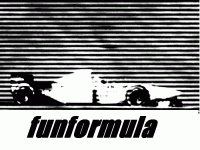
Blisters on GFK bodywork
#1

Posted 09 December 2011 - 22:49
The reason for this may be, that the car is stored in a place with sometimes high air humidity.
When I cut the blisters, there is a yellow/brown liquid inside.
The blistering only appears on the GFK parts not on the carbonfibre-monocoque.
Does anyone has the same problems or know the reason for this?
I like to paint the car in new colours and don´t want to happen the blistering again.
Thanks for all thoughts and answers.
Advertisement
#2

Posted 09 December 2011 - 23:06
Sure the car was not painted originally with moisture in the airline/tank? It usually shows fairly soon but sometimes not for a year or so.The paint on the GFK bodywork of my Reynard F3 car is covered with lots of small blisters (2-5mm)
The reason for this may be, that the car is stored in a place with sometimes high air humidity.
When I cut the blisters, there is a yellow/brown liquid inside.
The blistering only appears on the GFK parts not on the carbonfibre-monocoque.
Does anyone has the same problems or know the reason for this?
I like to paint the car in new colours and don´t want to happen the blistering again.
Thanks for all thoughts and answers.
A good filter/trap cleaned regularly and the compressor drained regularly is imperative for decent paint work.
#3

Posted 09 December 2011 - 23:38
Sure the car was not painted originally with moisture in the airline/tank? It usually shows fairly soon but sometimes not for a year or so.
A good filter/trap cleaned regularly and the compressor drained regularly is imperative for decent paint work.
I own the car since 1994 and it shows no signs of blistering until 2005 when i stored it in the current place, which has a high level of air humidity sometimes.
#4

Posted 10 December 2011 - 01:31
#5

Posted 10 December 2011 - 02:35
p.s. I have encountered a minor occurence on our family boat below the water-line, and we sanded, buffed, &c the affected area and applied a thin coat of epoxy based enamel (as sort of gel-coat substitute) which seemed to prevent any further occurence (and that was over 20 years ago)
#6

Posted 10 December 2011 - 03:23
funny it only strikes certain year boats
the older 50-60's boats seldom have problems
thick gel-coats and heavy layups used then
70-80's boats it is much more common
esp on thin layups with thin gel-coat [resin prices follow oil]
I have heard where the boat was made matters
lots more problems in wet humid areas then dryer ones
are both sides of your glasswork painted ??
drying a few weeks in a hot dry place can help
and repaint BOTH sides
newer vinylester resin is claimed to be better then poly
#7

Posted 10 December 2011 - 14:58
#8

Posted 10 December 2011 - 22:14
Today I´d been told that the reason may be the use of Diethylentriamin (DETA) in the 2K Laminate. In the GFK-Laminate producing business there were problems with blistering since about 4 years.
The blisters are filled with a yellow/brown liquid (same as on my car) and appear about 6 months after producing the part.
BUT: My car was built in 1991 and the GFK bodyparts don´t show signs of blistering until 2005. But if the problem is caused by DETA, why not already in 1991?
@Wolf:
I also heard that boats sometimes suffer from "blistering" and that is caused because of moisture absorbtion (osmose) as you describe. But these blisters are usually filled with water and not the strange brown liquid.
I´m still confused.














